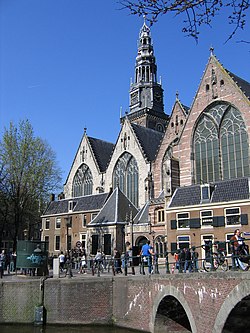My understanding of the Noteboom line of my family history ended with my third great-grandfather Walter Noteboom, who was born in 1845 in the Netherlands. That’s it – nothing more. The Noteboom line was an enigma… until recently. I had the fortunate luck of receiving some assistance from a visitor to this blog, Peter Miebies. He pointed me to a database for Dutch genealogy at www.geneaologie.nl.
On that site, I found a pedigree that included Walter Noteboom (though this pedigree listed his first name as Wolter). The Stamboom Dusseljee [Dusseljee Pedigree] was published by J. Lodewijks in 2008. We’ve exchanged preliminary emails and information – she’s sent me information from her database and I’m sending her information about what happened to Walter and his family in the United States.
I’ve been spending time going through all the information in her tree – it documents four more generations back from Walter. It’s a lot of data, and there is not a lot of source documentation, so at this point the information is largely anecdotal and/or unproven. However, there is a lot of really interesting information that will be fun to delve into.

One of the first things to pique my interest was the marriage 6th great grandparents Sjouke Sijes Noteboom and Jannetje Zweersen. Sjouke Sijes Noteboom was baptized in the Dutch Reformed Church on October 2, 1707 in Oenkerk, Friesland, Netherlands. As an adult, he was a master carpenter. He married Jannetje Zweersen on May 1, 1733 at the Oude Kerk in Amsterdam. Jannetje was born on February 8, 1713 in Zwolle.
According to Wikipedia, the Oude Kerk is Amsterdam’s oldest building from circa 1213, and its oldest parish church, consecrated in 1306. Saint Nicolas is its patron saint. It is situated on Oudekerksplein, the square in the main red-light district of Amsterdam. Following the Reformation in 1578, it became the home of the Calvinist Dutch Reformed Church.

Some interesting historical notes about the Oude Kerk:
- Rembrandt’s children were all christened there and his wife is buried there.
- The wooden roof vault dates to 1390.
- The floor is gravestones. Citizens of Amsterdam were buried there until 1865 and there are more 2500 graves within the confines of the church.
Like this:
Like Loading...



